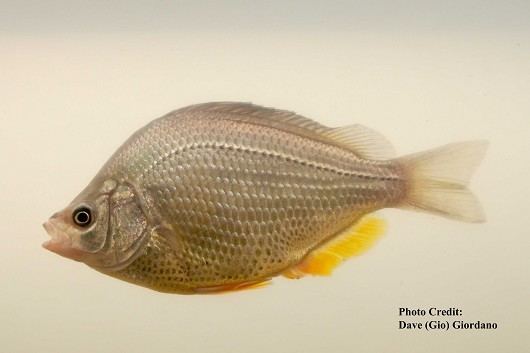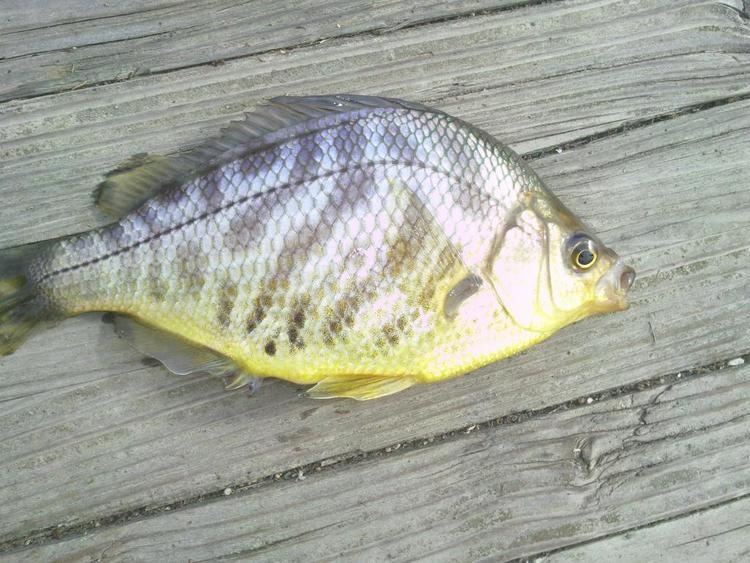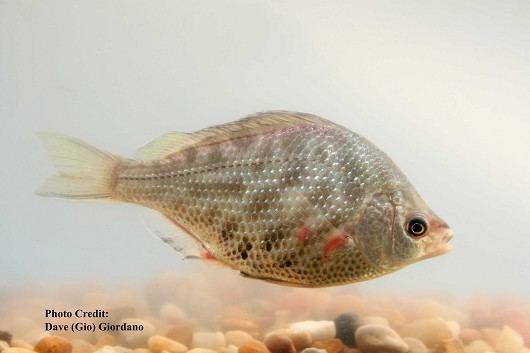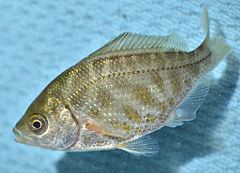Scientific name Hysterocarpus traskii Higher classification Hysterocarpus Order Perciformes | Family Embiotocidae Phylum Chordata Rank Species | |
 | ||
Genus HysterocarpusGibbons, 1854 Similar Sacramento blackfish, Shiner perch, Sacramento perch, Sacramento pikeminnow, Lavinia exilicauda | ||
Russian river tule perch
The tule perch Hysterocarpus traskii is a surfperch (Embiotocidae) native to the rivers and estuaries of central California, United States of America. It is the sole member of its genus, and the only freshwater surfperch.
Contents

The tule perch is small, at most 15 cm in length, and deep-bodied, with a definite hump shape between the head and the dorsal fin. Color is variable, with a dark back that may have a bluish or purplish cast, and a whitish or yellowish belly. The sides may have a pattern of narrow or wide bars; the frequency of barred patterns varies according to subspecies. The dorsal fin has a noticeable ridge of scales running along its base, and consists of 15-19 spines followed by 9-15 soft rays. The anal fin has three spines and 20-16 soft rays, while the pectoral fins have 17-19 rays.

They are fish of the lowlands, inhabiting lakes, sloughs, streams, and rivers, generally in areas with beds of vegetation or overhangs. They generally gather in groups, sometimes in large numbers. Their diet is primarily small invertebrates sucked up from the bottom or picked from the midwater column.

The two subspecies of tule perch recognized by FishBase are:
The formal description of the tule perch was first read by W. P. Gibbons at a meeting of the California Academy of Natural Sciences on May 15, 1854, and then published in the San Francisco newspaper The Daily Placer Times and Transcript on May 18, making it a rare case of a new species being published in a newspaper rather than book or scientific journal. Gibbons chose the genus name Hysterocarpus "womb-fruit" referring to the livebearing common to all surfperches, and traskii (sometimes seen as traski) in honor of J. B. Trask who sent Gibbons the first specimens of this fish.
Curious tule perch

